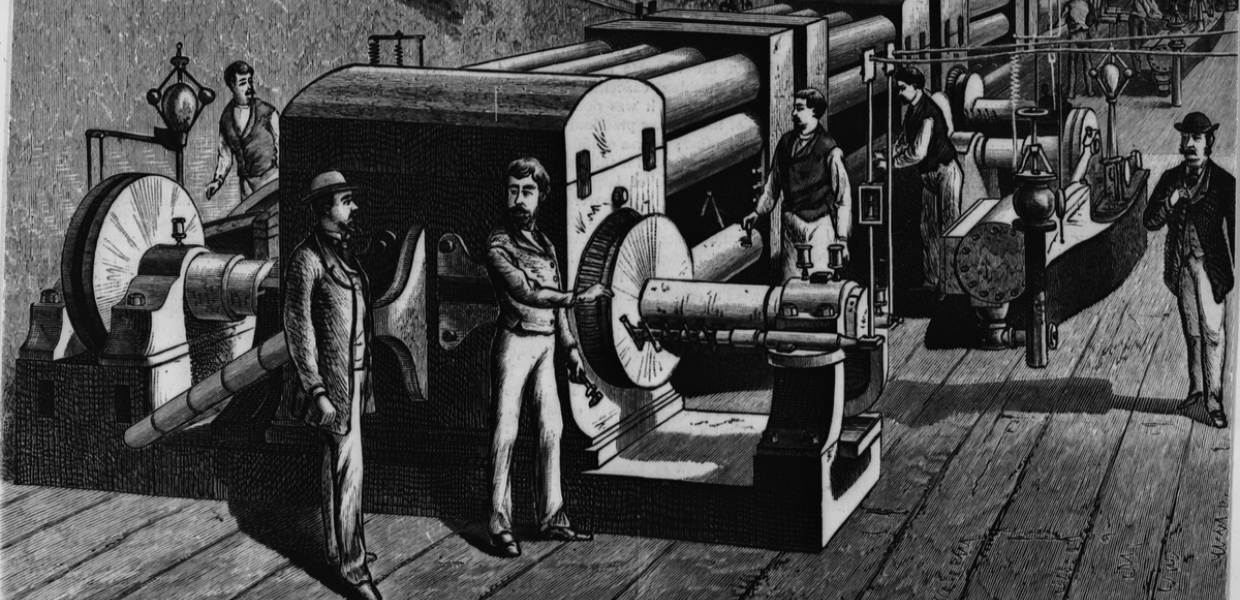Historical topics in ‘The Age of Synergies’
The Historiana collection The Age of Synergies consists of material (sourced from Europeana Collections) on the Second Industrial Revolution, which took place between 1870 and 1914. During this time, the increasing use of steam power and electricity, both fuelled by fossil fuels, led to significant changes in production, communication and transportation. These changes, in turn, led to demographic developments and increasing globalisation. Such innovations in energy use have given rise to the description of the period as an ‘Age of Synergies.’
This source collection aims to help students understand the connections between different energy uses, how they have influenced each other and what the consequences of technological innovation may be. It also explores the concept of cumulative causation, a theory developed by the economist Gunnar Myrdal in 1956. The theory suggests that change is the result of the interplay between several important causes that not only coincide, but accelerate and increase each other. This understanding of cause and consequence can help students to explore the Second Industrial Revolution.
How do you teach The Age of Synergies?
In addition to Historiana’s source collection on The Age of Synergies, they have developed an e-Learning activity that uses digitised industrial heritage material to help students explore cumulative causation and the developments of the Second Industrial Revolution. The activity asks them to investigate the relationship between historical cause and consequence to produce a coherent narrative of the period’s synergies.
In the first part of the activity, students use a sorting tool to link different sources (which represent developments such as the increasing use of electricity and changes in transport, communication and population) by their direct and indirect connections. For example, electricity directly led to the invention of the electric motor (direct), which in turn led to changes in transportation (indirect). Students can summarise their findings in a short paragraph.
In the second part, students again look at the sources and use a prioritising tool to think about the significance of each development in relation to the others. The more significant a development is, the larger students can make it.
In the third and final part, students again use a sorting tool to re-examine the sources. They will need to make connections between different developments to form a coherent narrative of the cumulative causation that took place during the Second Industrial Revolution. A teacher could use this part of the learning activity to discuss the complex and constructivist nature of history as a science.
Explore industrial heritage on Europeana Collections and find more teaching resources including units, source collections and eLearning activities on the Historiana website.



